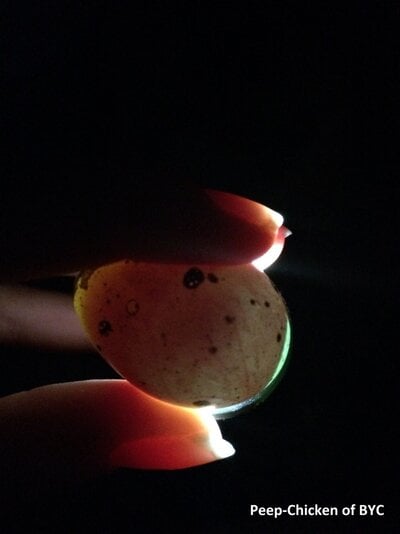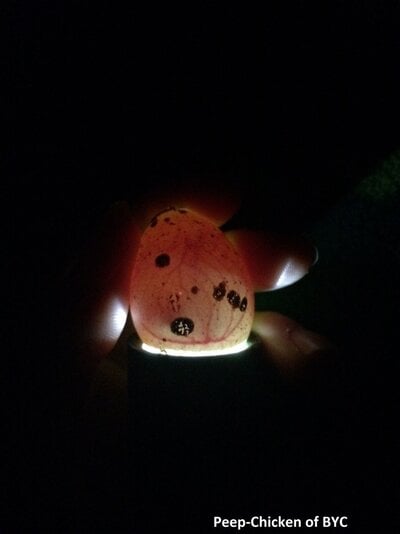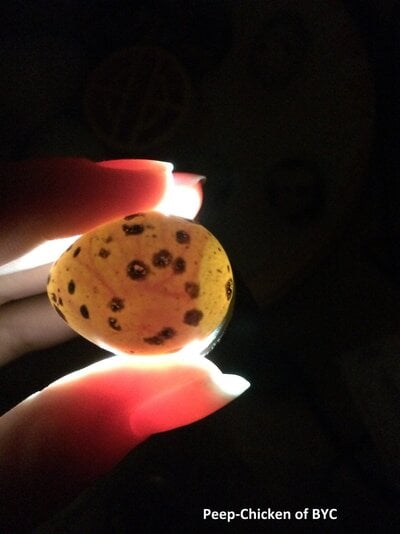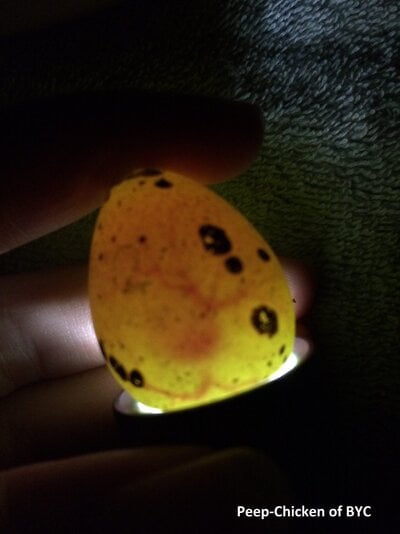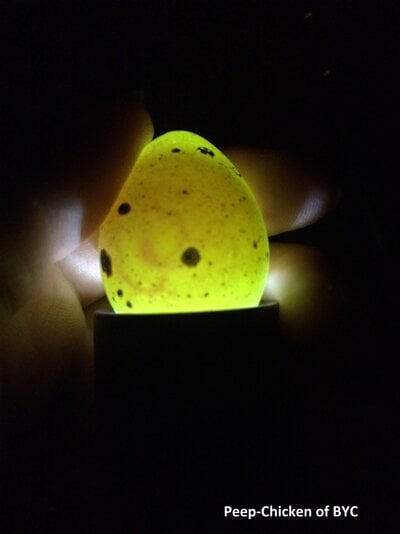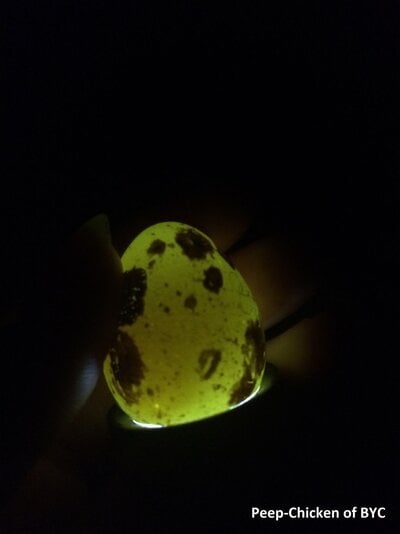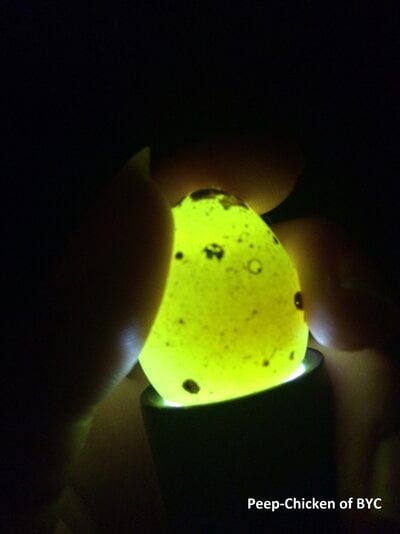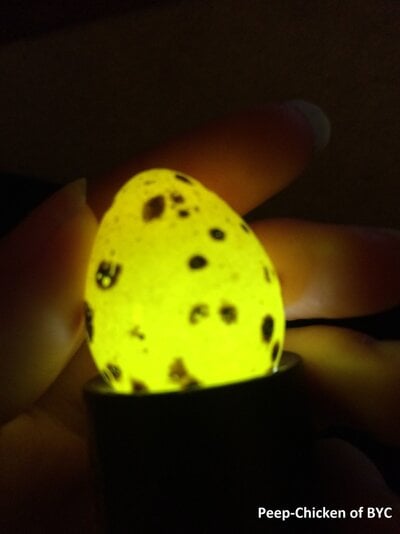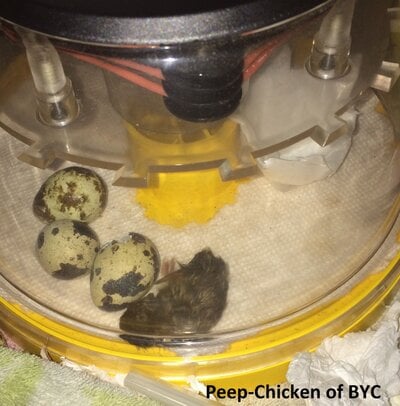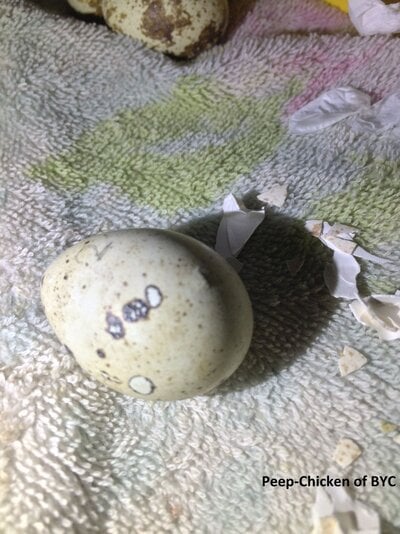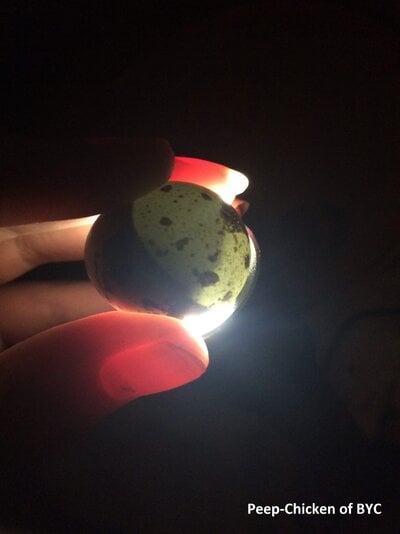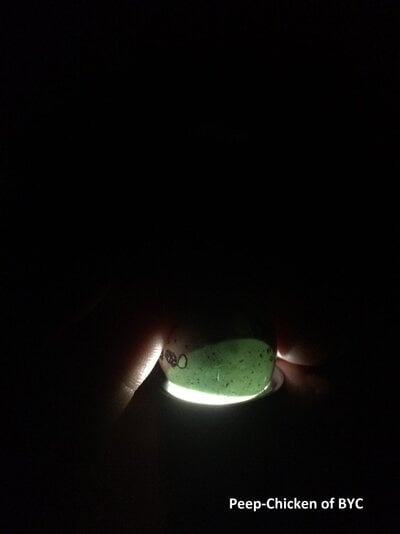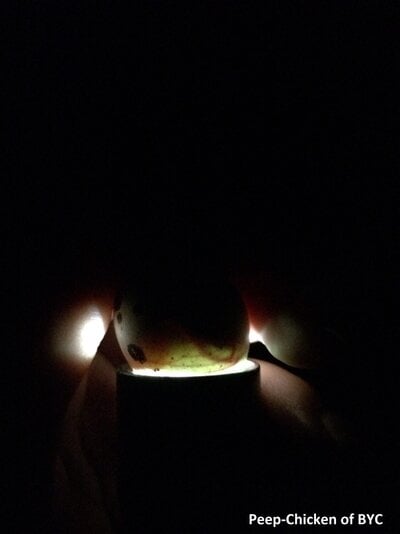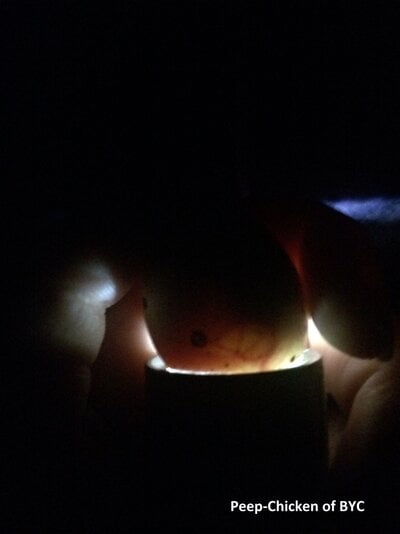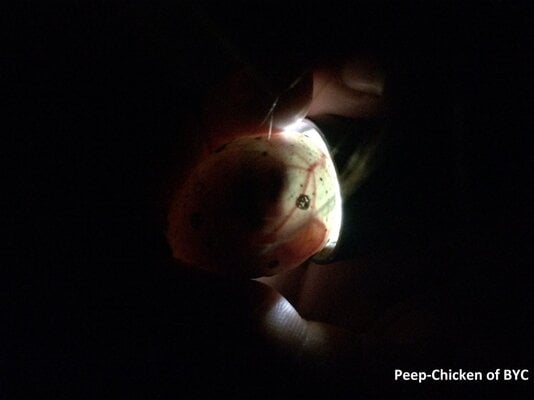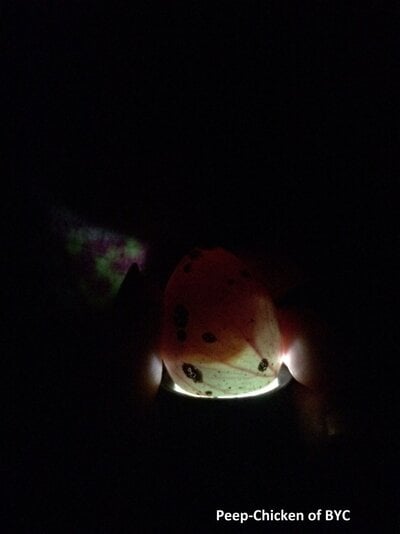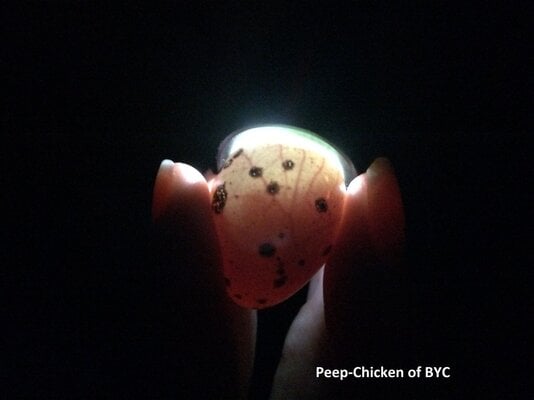I used a Brinsea Mini Advance. I started with 8 quail eggs from a local guy. The next day I added to fridge quail eggs. From 10 eggs, half were infertile. Two chicks pipped, never hatched. I had too low of a humidity. I ended with three chicks! One was a fridge egg. Click on the photos for larger versions.
Coturnix take 18 days to hatch. Lockdown on day 15.
Also! Many BYCers would highly recommend you do not candle everyday! Just day 9(to check for infertility) and day 15 to check for quitters. Over candling could harm an embryo, and towards hatch day, shining a bright light in probably scares/harms the chick.
0 Hours You won't see anthing. The yolk is some visible. These eggs were a little porous, if you can help it, make sure your hatching eggs aren't porous. Some quail eggs you can't see through due to coloring.

24 Hours Still not anything to see. If the egg was cracked open and you were to look at it under a dissection microscope, you could see the head/neural and up to four pairs of somites(mesodermal cells that develop into tissues like bone, muscle and cartilage) have formed.

48 Hours The yolk is more pronounced. If you were to open up the egg, you'd see the 'blood island', or the blood ring.

Day 3 Look, you can actually see something! The limb buds have started to form as well a the eye. You can see the heart beat. Video of the heart beating:

Day 4 Starting to look more like an embryo.

Day 5 More veining and limb development. The beak has started to development.

Day 6 You can see the embryo's shadow, there is much more veining.

Day 7 It's more difficult to get clear pictures.

Day 8

Day 9

Day 10 This picture is awesome, you can see the outline of the head, and the eye!

Day 11 Can't find my day 11 picture... More space was filled up, and you might see toes.
Day 12

Day 13

Day 14 I can't find my day 14 picture. There will just be more development.
Day 15 Lockdown! Time to raise the humidity and stop turning the eggs! It's best to nit candle during this time to keep in your humidity and so the chicks can move into hatching position. Actually, I had an internal pip. You can see it below. That one spot against the shell is the beak.
Video of internal pip:
Video of float test:
Make sure you don't have a external pip or you may drown the chick.

Day 16 Top picture is a internal pip. The second one is an external pip.


Days 17 and 18 Hatch day!

I hope to add to this as I learn more. Though I'm still a novice at quail, questions and feedback are welcome!
Coturnix take 18 days to hatch. Lockdown on day 15.
Also! Many BYCers would highly recommend you do not candle everyday! Just day 9(to check for infertility) and day 15 to check for quitters. Over candling could harm an embryo, and towards hatch day, shining a bright light in probably scares/harms the chick.
0 Hours You won't see anthing. The yolk is some visible. These eggs were a little porous, if you can help it, make sure your hatching eggs aren't porous. Some quail eggs you can't see through due to coloring.
24 Hours Still not anything to see. If the egg was cracked open and you were to look at it under a dissection microscope, you could see the head/neural and up to four pairs of somites(mesodermal cells that develop into tissues like bone, muscle and cartilage) have formed.
48 Hours The yolk is more pronounced. If you were to open up the egg, you'd see the 'blood island', or the blood ring.
Day 3 Look, you can actually see something! The limb buds have started to form as well a the eye. You can see the heart beat. Video of the heart beating:
Day 4 Starting to look more like an embryo.
Day 5 More veining and limb development. The beak has started to development.
Day 6 You can see the embryo's shadow, there is much more veining.
Day 7 It's more difficult to get clear pictures.
Day 8
Day 9
Day 10 This picture is awesome, you can see the outline of the head, and the eye!
Day 11 Can't find my day 11 picture... More space was filled up, and you might see toes.
Day 12
Day 13
Day 14 I can't find my day 14 picture. There will just be more development.
Day 15 Lockdown! Time to raise the humidity and stop turning the eggs! It's best to nit candle during this time to keep in your humidity and so the chicks can move into hatching position. Actually, I had an internal pip. You can see it below. That one spot against the shell is the beak.
Video of internal pip:
Day 16 Top picture is a internal pip. The second one is an external pip.
Days 17 and 18 Hatch day!
I hope to add to this as I learn more. Though I'm still a novice at quail, questions and feedback are welcome!

